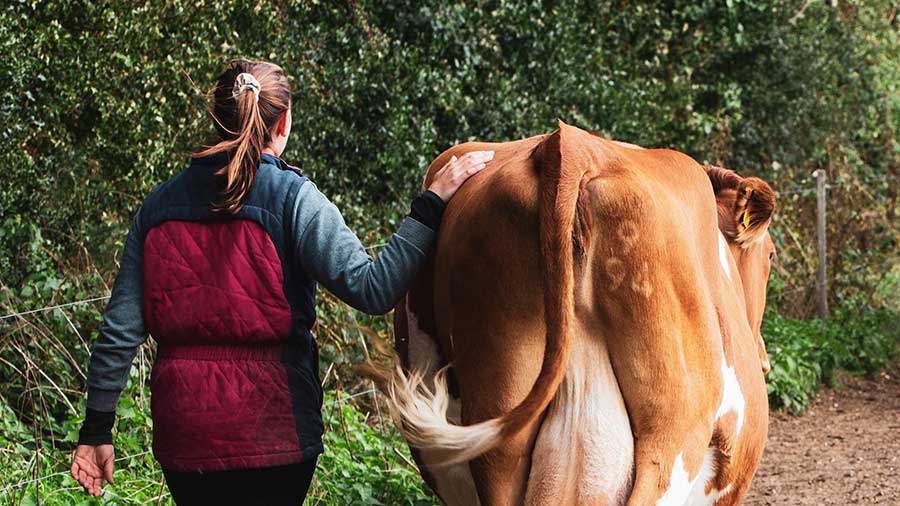Taking on an apprentice – what farm employers need to know
 © Mint Images/Shutterstock
© Mint Images/Shutterstock Apprenticeships offer young people an opportunity to earn while they earn, but what is involved from an employer’s perspective? We answer the frequently asked questions and provide information on where to find out more.
What is an apprenticeship?
Apprenticeships are open to people who are 16 and over and want to combine on-the-job training with studying.
This is a partnership between an employer, training provider and the apprentice.
Candidates get the benefits of being employed in a job, but typically do one day a week or a block release at college to top up their learning.
Employers can use apprenticeships to bring new talent into the business or develop the skills of existing members of staff, which research suggests can improve farm productivity, reduce recruitment costs and lead to a more motivated workforce.
See also: Farmers urged to get behind new trailblazer apprenticeships
Who are apprenticeships aimed at?
Land-based apprenticeships appeal to people keen to get out into the world of work or with a desire to continue their learning outside full-time education.
While many people assume that apprenticeships are aimed at entry-level workers, they are pitched at a variety of levels and can be a good way to add to and improve skills.
Subjects are as varied as agriculture, animal care, poultry technician, stockperson, fencing, land-based engineering, crop technician and game and wildlife management.
It is even possible to become a rural chartered surveyor through an apprenticeship.
The terminology for the different types of apprenticeship can be confusing as each of the four devolved regions manages its own apprenticeship programme and the way they are delivered and funded is slightly different in each country.
For example, in England there are intermediate (equivalent to GCSEs), advanced (A-Level equivalent), higher and degree level apprenticeships to choose from, while in Scotland the options are foundation (for school-age pupils), modern and graduate apprenticeships.
Over the past couple of years, a new form of ‘trailblazer’ apprenticeship has also been introduced which have been designed with the input of employer groups to make sure that apprentices have the required behaviours and skills to fit into the modern workplace.
Length of apprenticeships
The length of the apprenticeship will depend on the level at which it is pitched and the employer.
Typically, intermediate apprenticeships last between one year and 18 months, advanced apprenticeships are usually studied over two years and higher and degree-level apprenticeships take anywhere between three and six years to complete.
How does an employer find an apprentice?
A good first port of call is your local agricultural college, as they may be able to match you up with someone looking to start an apprenticeship.
Many will advertise apprenticeship vacancies on their website free of charge.
Alternatively, you can recruit your own apprentice and then look to find the right training provider or seek to put an existing employee through an apprenticeship training programme to help them develop their skills.
There is no upper age limit for an apprentice.
How much do you need to pay an apprentice?
The general rule is that apprentices are eligible for the National Minimum Wage.
If they are under 19, or 19 and over and in the first year of their apprenticeship, they are entitled to the apprentice rate, which is currently £3.90/hour.
After the first year, if they are over 19 they must be paid the full NMW rate.
Apprentices must also be paid for their normal working hours and the time they have to attend college.
However, employers can pay more than the minimum wage and many choose to do so as the apprentice’s skills develop.
In Wales, where an Agricultural Wages Board is still in place, it sets out minimum wages for apprentices in the farming sector.
These start at £4/hr for an apprentice in their first year of work, ranging to £8.21/hr dependent on age and length of service.
Apprentices should get at least 20 days paid holiday per year, plus bank holidays.
What other costs are there to think about?
In addition to wages, consideration needs to be given to how the training and assessment side of an apprenticeship will be funded.
The good news for employers is that there is generous public funding available for the college-based training costs of an apprenticeship, although the amount is different in each of the devolved regions.
In Northern Ireland, the cost of direct training is fully funded by the government for apprentices under 25 years old.
In England, most farm businesses will fall into the co-investment model of funding, whereby the government picks up 95% of the training and assessment costs and the employer pays just 5%.
What is expected from an employer in terms of delivery?
The training provider or agricultural college should work with an employer to plan and design a training programme that works for the business and meets the needs of the individual.
It is a requirement in England and Wales to have an apprenticeship agreement in place between the apprentice and the employer which sets out how long they will be employed for, the training they will receive, their working conditions and the qualifications they are working towards.
Employers can write their own apprenticeship agreement or download a templated agreement from the government website.
